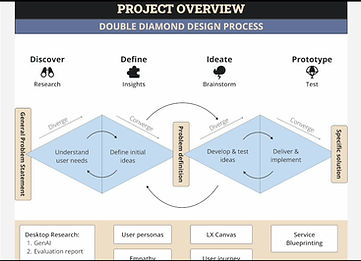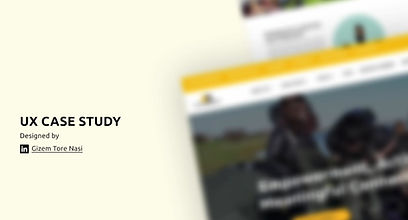SELECTED PROJECTS
Explore examples that reflect my work, methodology, and mindset. Most case studies include a full video walkthrough of the design flow, capturing not just the outcome, but the thinking, decisions, and process that shaped it from beginning to end.
Every project began with a conversation and developed through a unique mix of marketing expertise and design thinking. They showcase my diverse corporate background and adaptable, hands-on approach with strategic vision and a flexible creative toolkit.

Strategic marketing & design
Dec’ 22 - Present, Copenhagen
The collaboration with Tiny Dancer, a dance and theatre association, exemplifies a blend of strategic direction and hands-on execution in support of business and product development, brand positioning, and marketing. While grounded in market and competition analysis, marketing communication strategy, and new product and business development, the work was intentionally flexible, responding to emerging needs through ad hoc support and hands-on involvement where it was needed most. Practical contributions included UX/UI optimisation, a website redesign that balanced improvements with the existing style guide (resulting in a 192% performance increase), newsletter distribution, and the creation of B2B contact lists to enhance outreach and day-to-day operations.


UX / UI design
March - June 2024, Copenhagen
The purpose of the project was to recreate the user interface of the website of a non-profit swing dance organisation based in Copenhagen, so that the people who are interested in swing dance could easily sign up for the courses, attend the events, workshops and engage with them in a more efficient and meaningful way. New design aimed a seamless flow for creating interest, desire and action on the website. Overall, design thinking method was adopted and a prototype was produced. Due to resource constraints testing and implementation were not realised. Challenges: 1. Website Issues: -Overwhelming and cluttered layout. -Difficult navigation and confusing user flow. -Outdated visuals that fail to resonate with younger users. -Frustrating sign-up process. 2. Business Challenges: -Attracting and retaining new students. -Addressing logistical issues and improving onboarding. Research Insights: 1. User Research and Testing -Feedback revealed issues with information overload, redundant content, and unclear membership requirements. 2. Stakeholder Input: -Volunteer teachers and founders highlighted the need to improve logistics and engagement, as well as attracting younger demographic. User Personas: Key personas represented aspiring and creative individuals seeking connection and inclusivity. Proposed Solutions 1. Redesign the website with: -Clear, intuitive navigation and user flow. -Modern and playful visual design appealing to younger users. -Streamlined sign-up process. 2. Develop a style guide: -Updated logo, vibrant color palette, and modern typography. -Visual elements reflecting the joy and energy of swing dance. 3. Enhance functionality: - Features like lead-and-follower matching for dance partners. -Responsive design for seamless use across devices. Expected Outcomes -Increased engagement and reduced bounce rates. -Higher conversion rates for class sign-ups. -Strengthened brand identity that appeals to both current and new audiences.
Service design for LX
Oct-December 2024, Copenhagen
The study on learning experience design (LXD) for a master’s course at CBS (Copenhagen Business School) adopts a service design lens and is structured using the Double Diamond framework, with a primary focus on the first diamond—the Discover and Define phases. This initial emphasis allowed for a deep exploration and understanding of the problem space, aligning with a learner-centered approach. Methods Discover Phase: Empathising with Learners and Teachers To empathise with learners and teachers, the study employed diverse research methods, including: - User Research: Gaining insights through interviews and surveys. - Desktop Research: Analyzing existing studies and reports. - Ethnographic Research: Observing learning environments and interactions. Define Phase: Analyzing Insights The define phase utilised several definition techniques to refine the understanding of the problem space: -User Personas: Capturing archetypes of learners to understand their needs and goals. -Empathy Mapping: Exploring learners’ thoughts, feelings, and behaviours. -Ecosystem Mapping: Identifying relationships within the educational environment. -Why Methods: Delving into the root causes of challenges faced by learners and teachers. Ideation For the ideation phase, tools such as pain and relief maps, user journey mapping, and the LX Canvas were employed. These tools provided: -Broad Perspective: Highlighting different touchpoints with various stakeholders. -Focused Analysis: Narrowing down to specific challenges, such as lecture design, to propose actionable solutions. Limitations While the study suggests methods like SCAMPER, service blueprinting, and ideation workshops for the Develop and Deliver phases, these could not be fully implemented due to a lack of stakeholder involvement and co-creation opportunities. As a result, the research outcomes remained limited to initial solution offerings rather than fully realized prototypes or tested implementations. Conclusion Despite its limitations, the study’s framework emphasizes the importance of human centric and iterative design, systems thinking, and holistic learner journeys. It highlights a clear pathway for future collaboration through stakeholder engagement. Ultimately, this study underscores the potential of service design principles to drive outcome-driven, transformative learning experiences, even when constrained by individual efforts.


UX Research & Design
Mar´ 23 - Jun’ 23, Copenhagen
Worked on the company case of an NGO's product website with the goal of optimising their user flow and experience for higher conversion rates. The study includes: Creating Design Brief, Defining Personas, Competitive Analysis, Designing and Conducting Quantitative and Qualitative Researches, Card Sorting, User Flow Mapping, Low and High Fidelity Wireframing, Prototyping on Figma and Usability Testing. At the end of the project, company gained many actionable insights on their user persona which led to elaborating their target audience; on their website to refine their UX writing, improve their data architecture, rewrite their value proposition, fixing their design and user flows.
Worked for and Collaborated with